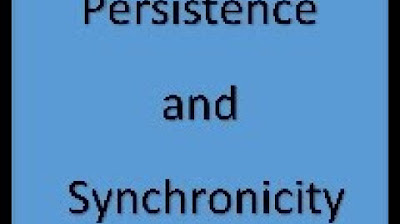How to choose between synchronous and asynchronous communication
Summary
TLDRIn this Knowledge Bites video, the focus is on choosing between synchronous and asynchronous communication. It explains that synchronous communication, like phone calls and video conferences, is ideal for urgent matters requiring immediate feedback and collaboration, but can be disruptive. Asynchronous communication, such as emails and messages, is better for tasks that don't need quick responses and allows team members to work at their own pace. The video emphasizes selecting the right communication type based on urgency, task needs, and team availability, and suggests a balanced approach where needed.
Takeaways
- 💡 Synchronous and asynchronous communication are two distinct types of communication used in teams.
- ⏰ Synchronous communication happens in real-time, such as phone calls, video conferences, and instant messaging.
- 🔄 Synchronous communication is ideal for situations that require immediate feedback or urgent discussions.
- 🤝 Synchronous communication is great for building relationships and promoting team collaboration.
- ⚠️ One downside of synchronous communication is that it can be disruptive and time-consuming, especially for large teams or those working across different time zones.
- ✉️ Asynchronous communication does not happen in real-time and includes methods like emails, messages, and comments.
- 🚀 Asynchronous communication allows team members to work at their own pace and reduces interruptions.
- 💬 Asynchronous communication is suitable for tasks that don't require immediate feedback or when a longer response time is acceptable.
- 🤔 Choosing the right communication type depends on factors like task urgency, team size, and member availability.
- 🔄 A combination of synchronous and asynchronous communication can be used depending on the specific needs of the task.
Q & A
What is synchronous communication?
-Synchronous communication is when two or more people communicate in real time, such as through phone calls, video conferences, or instant messaging.
What are some examples of synchronous communication?
-Examples of synchronous communication include phone calls, video conferences, and instant messaging.
When is synchronous communication ideal?
-Synchronous communication is ideal when immediate feedback is needed, there is an urgent matter to discuss, or when building relationships and promoting team collaboration.
What are the downsides of synchronous communication?
-Synchronous communication can be disruptive, time-consuming, and challenging to coordinate with large teams or across different time zones.
What is asynchronous communication?
-Asynchronous communication is when two or more people communicate without being in real time, such as through emails, messages, or comments.
When is asynchronous communication most suitable?
-Asynchronous communication is most suitable for tasks that don't require immediate feedback, allowing team members to work at their own pace with fewer interruptions.
What are some drawbacks of asynchronous communication?
-Asynchronous communication can lead to misunderstandings, especially if the communication is unclear or lacks context.
How do you choose between synchronous and asynchronous communication?
-Choosing between synchronous and asynchronous communication depends on the urgency of the task, the size of the team, and the availability of team members.
Can you use both synchronous and asynchronous communication together?
-Yes, you can use a combination of both types depending on the task at hand. For example, urgent discussions can be handled synchronously, while routine updates can be done asynchronously.
What are the key benefits of asynchronous communication?
-The key benefits of asynchronous communication are reduced interruptions, flexibility for team members to work at their own pace, and the ability to handle tasks that don't need immediate responses.
Outlines

このセクションは有料ユーザー限定です。 アクセスするには、アップグレードをお願いします。
今すぐアップグレードMindmap

このセクションは有料ユーザー限定です。 アクセスするには、アップグレードをお願いします。
今すぐアップグレードKeywords

このセクションは有料ユーザー限定です。 アクセスするには、アップグレードをお願いします。
今すぐアップグレードHighlights

このセクションは有料ユーザー限定です。 アクセスするには、アップグレードをお願いします。
今すぐアップグレードTranscripts

このセクションは有料ユーザー限定です。 アクセスするには、アップグレードをお願いします。
今すぐアップグレード関連動画をさらに表示

Message Oriented Communication

How to safely and gracefully handle timeouts in a microservices

Why Does Texting Feel Different from Talking? | Otherwords

Serial Communication with Arduino - The details!

Asynchronous JavaScript Tutorial #1 - What is Async JavaScript?

Choosing Communication Tools for Virtual Teams
5.0 / 5 (0 votes)
